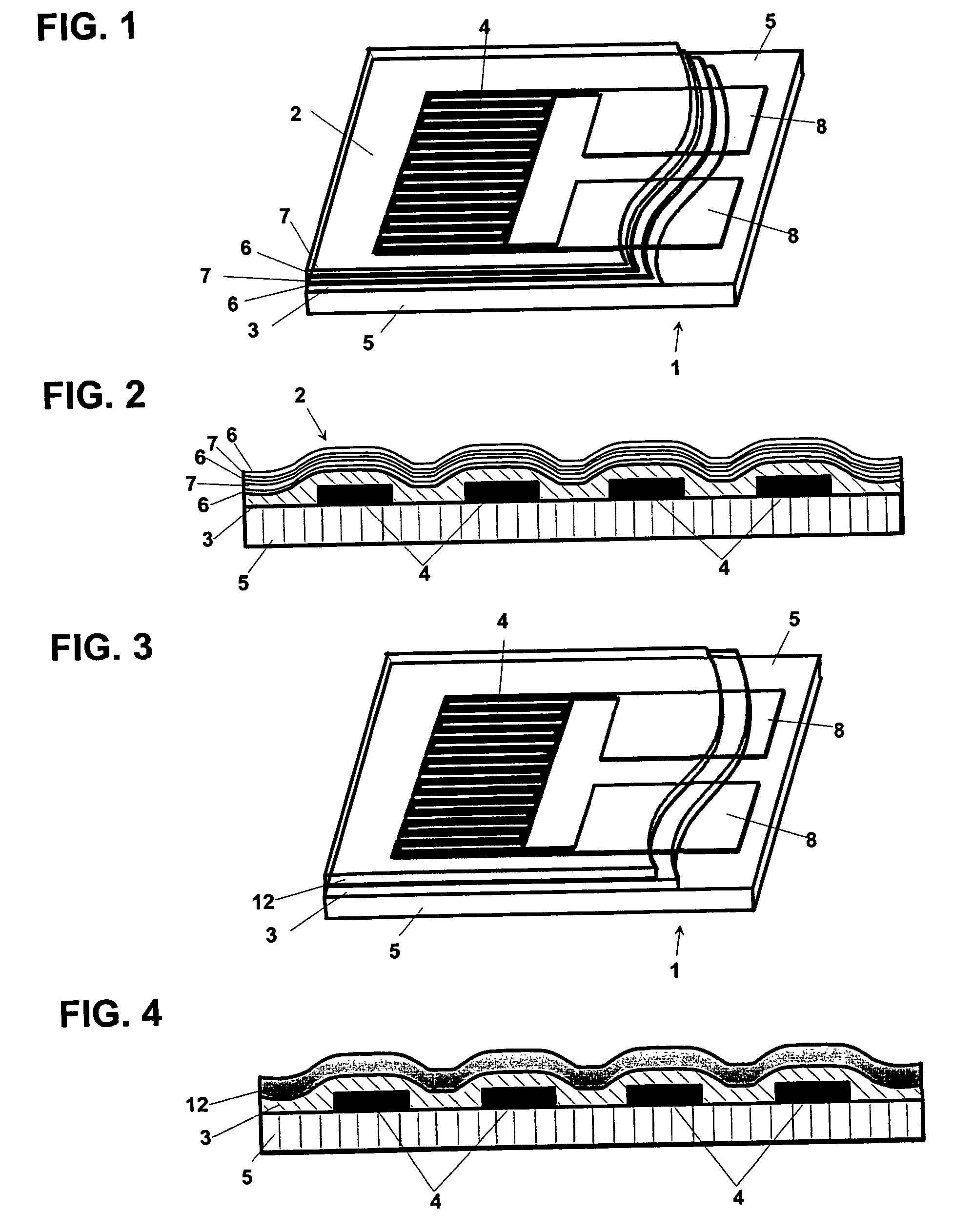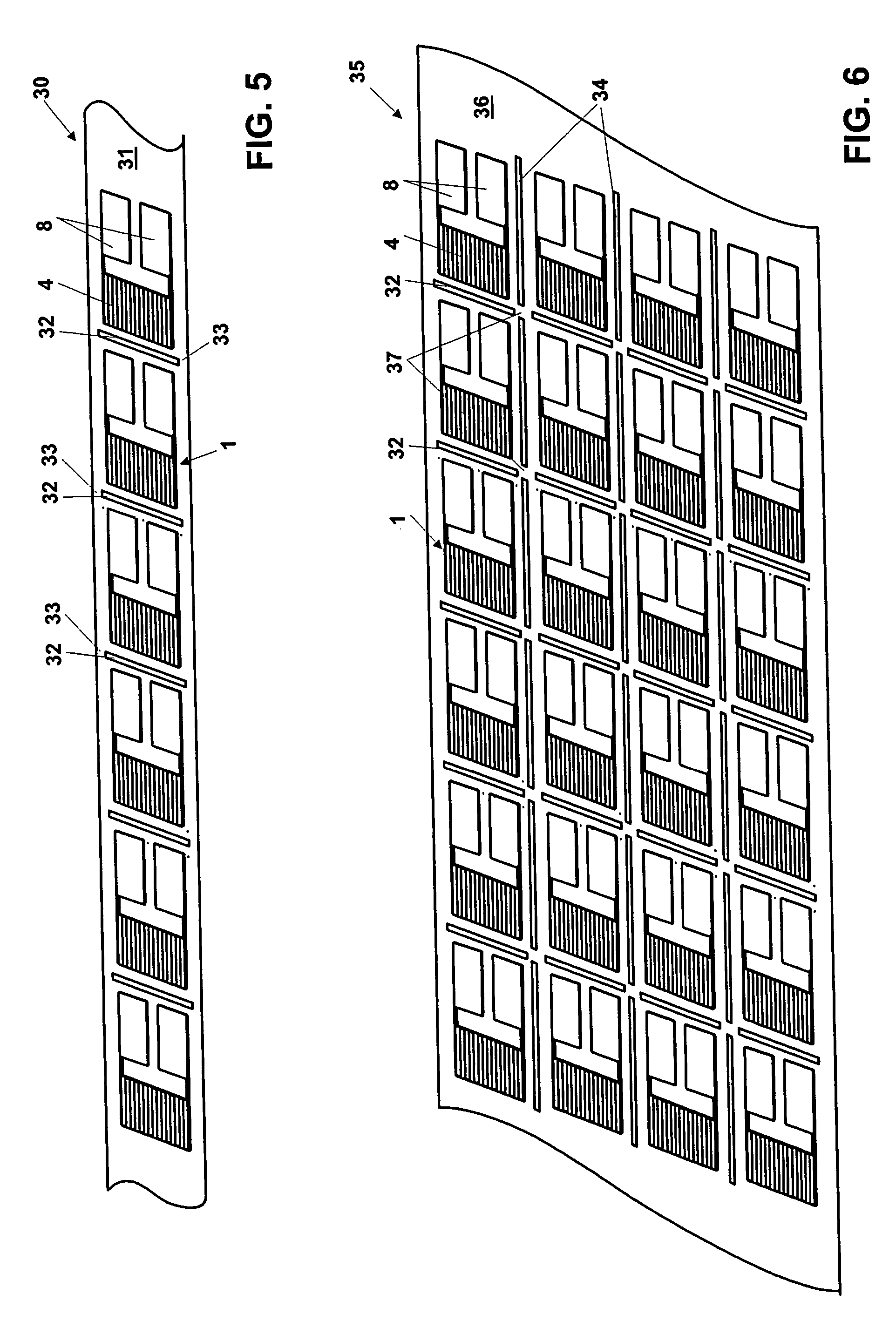Moisture protection for an electromechanical transducer
a transducer and electromechanical technology, applied in the field of strain gauges, can solve the problems of unacceptably large influence of leakage currents, relative high absorption of water and solvents, and leakage currents, and achieve the effect of avoiding or avoiding
- Summary
- Abstract
- Description
- Claims
- Application Information
AI Technical Summary
Benefits of technology
Problems solved by technology
Method used
Image
Examples
Embodiment Construction
[0050]FIG. 1 is a three-dimensional illustration of an exemplary individual strain gauge 1 that is provided with a protective coating in the form of a multilayered coating 2 against the penetration of moisture, particularly of water vapors and solvent vapors, but also gases such as oxygen. The strain gauge 1 has a strain-sensitive resistor track 4 which is arranged, for example, in a meandering shape on a carrier substrate 5 and joined to connector electrodes 8. The strain gauge 1 was, for example, cut from a two-dimensional array of strain gauges after the coating process had been completed. For the sake of clarity, the multilayered coating 2, which includes, or consists of, a regular sequence of layers 6, 7, is shown transparent and broken open on one side. The layers 6, 7 of the multilayered protective coating 2 are of different inorganic materials or of different stoichiometric compositions of an inorganic material including, or consisting of, at least two components, or they ha...
PUM
| Property | Measurement | Unit |
|---|---|---|
| temperature | aaaaa | aaaaa |
| temperature | aaaaa | aaaaa |
| humidity | aaaaa | aaaaa |
Abstract
Description
Claims
Application Information
 Login to View More
Login to View More - R&D
- Intellectual Property
- Life Sciences
- Materials
- Tech Scout
- Unparalleled Data Quality
- Higher Quality Content
- 60% Fewer Hallucinations
Browse by: Latest US Patents, China's latest patents, Technical Efficacy Thesaurus, Application Domain, Technology Topic, Popular Technical Reports.
© 2025 PatSnap. All rights reserved.Legal|Privacy policy|Modern Slavery Act Transparency Statement|Sitemap|About US| Contact US: help@patsnap.com



